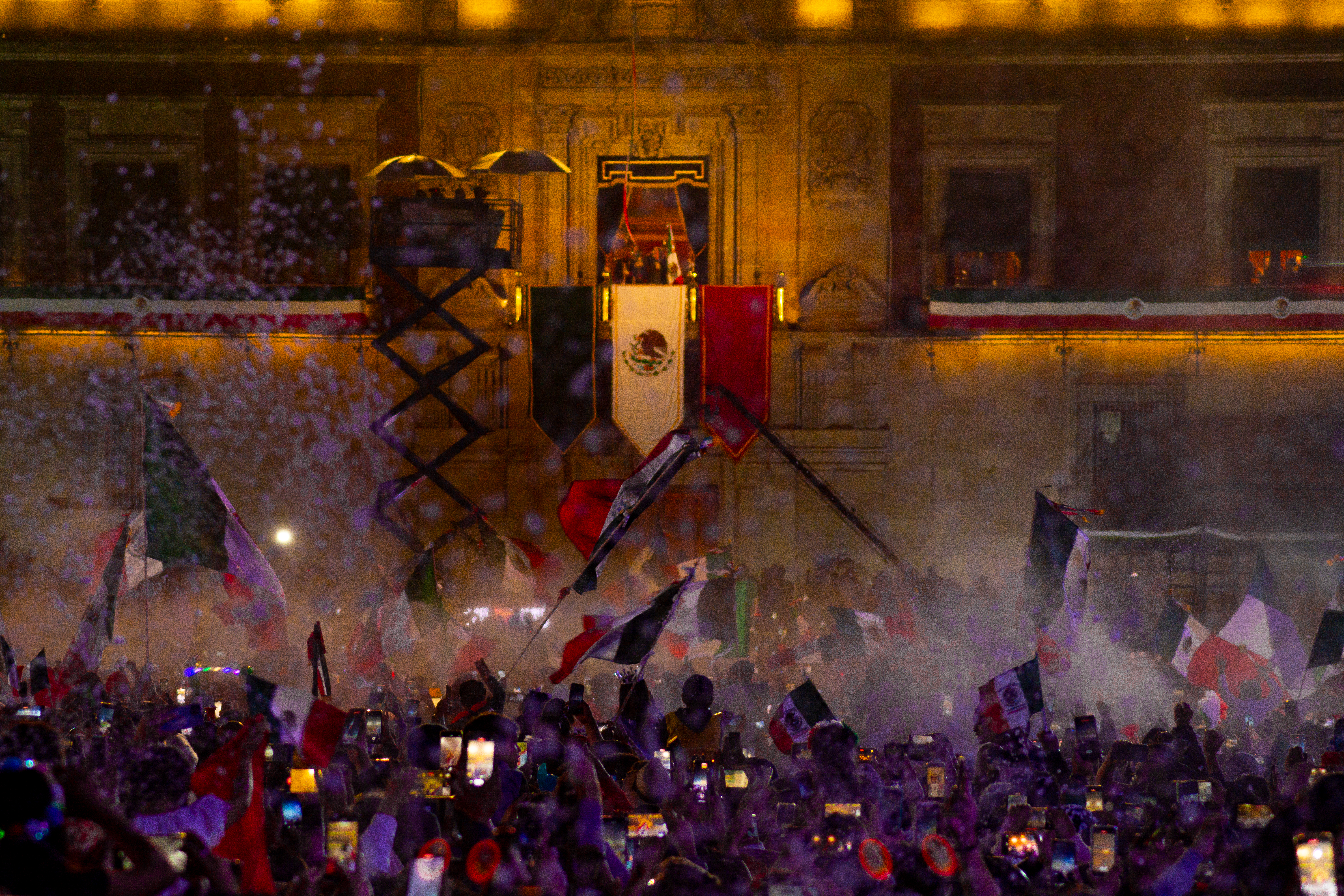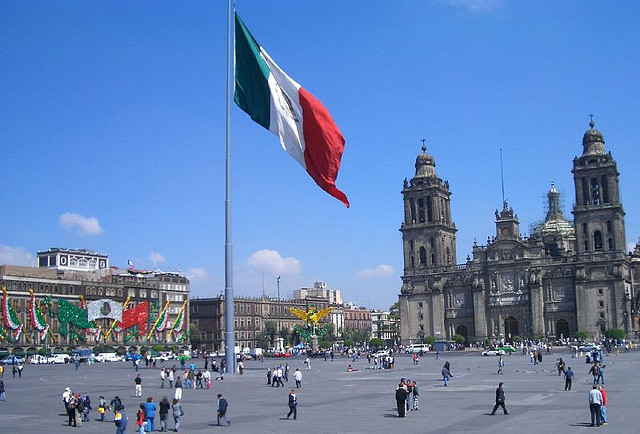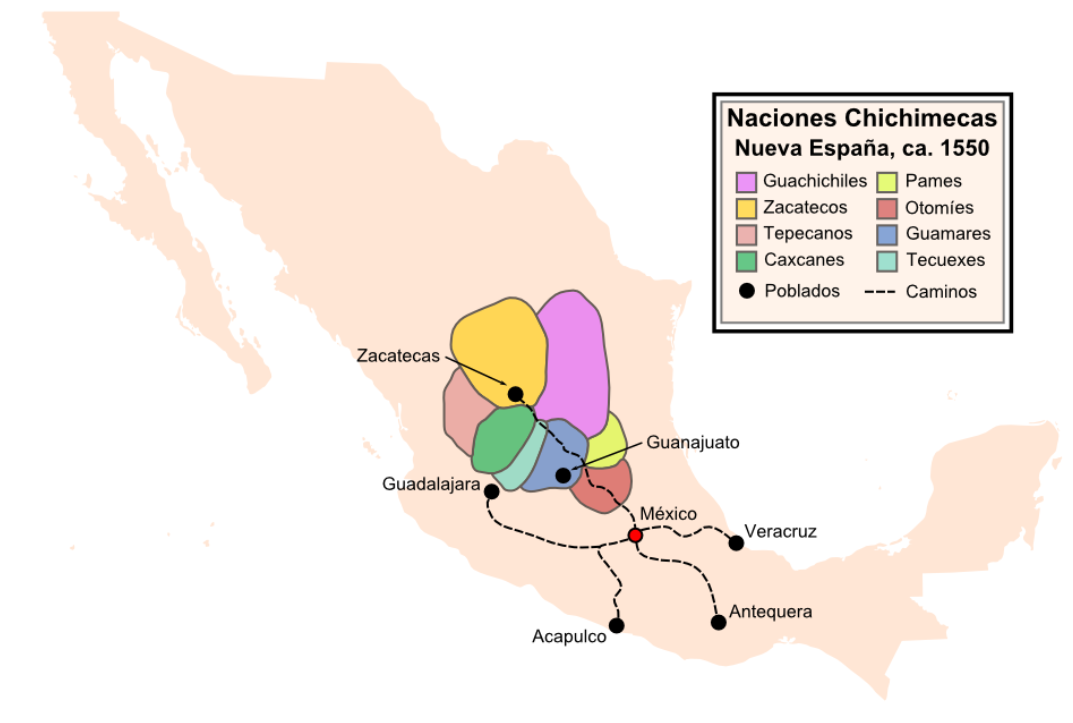|
Bajío Region
The Bajío (the ''lowland'') is a cultural and geographical region within the central Mexican plateau which roughly spans from northwest of Mexico City to the main silver mines in the northern-central part of the country. This includes (from south to north) the states of Querétaro, Guanajuato, parts of Jalisco (Centro, Los Altos de Jalisco), Aguascalientes and parts of Zacatecas, San Luis Potosí and Michoacán. Located at the border between Mesoamerica and Aridoamerica, El Bajío saw relatively few permanent settlements and big civilizations during Pre-Columbian history, being mostly inhabited by the Otomi and semi-nomadic tribes known to the Aztecs as the "Chichimeca" peoples (poorly attested conglomerate of Uto-Nahua groups, from whom the Toltec and the Aztecs were probably descended). The tribes that inhabited the Bajío proved to be some of the hardest to conquer for the Spanish—peace was ultimately achieved via truce and negotiation—but due to its strategic locatio ... [...More Info...] [...Related Items...] OR: [Wikipedia] [Google] [Baidu] |
Mexico
Mexico, officially the United Mexican States, is a country in North America. It is the northernmost country in Latin America, and borders the United States to the north, and Guatemala and Belize to the southeast; while having maritime boundary, maritime boundaries with the Pacific Ocean to the west, the Caribbean Sea to the southeast, and the Gulf of Mexico to the east. Mexico covers 1,972,550 km2 (761,610 sq mi), and is the List of countries by area, thirteenth-largest country in the world by land area. With a population exceeding 130 million, Mexico is the List of countries by population, tenth-most populous country in the world and is home to the Hispanophone#Countries, largest number of native Spanish speakers. Mexico City is the capital and List of cities in Mexico, largest city, which ranks among the List of cities by population, most populous metropolitan areas in the world. Human presence in Mexico dates back to at least 8,000 BC. Mesoamerica, considered a cradle ... [...More Info...] [...Related Items...] OR: [Wikipedia] [Google] [Baidu] |
Greater Mexico City
Greater Mexico City is the conurbation around Mexico City, officially called the Metropolitan Area of the Valley of Mexico (). It encompasses Mexico City itself and 60 adjacent municipalities of Mexico, municipalities of the State of Mexico and Hidalgo (state), Hidalgo. Mexico City's metropolitan area is the economic, political, and cultural hub of Mexico. In recent years it has reduced its relative importance in domestic manufacturing, but has kept its dominant role in the country's economy thanks to an expansion of its tertiary activities. The area is also one of the powerhouse regions of Latin America, generating approximately $200 billion in GDP growth or 10 percent of the regional total. , 21,804,515 people lived in Greater Mexico City, making it the List of North American metropolitan areas by population, largest metropolitan area in North America. Covering an area of , it is surrounded by thin strips of highlands separating it from other adjacent metropolitan areas, togethe ... [...More Info...] [...Related Items...] OR: [Wikipedia] [Google] [Baidu] |
Cry Of Dolores
The Cry of Dolores () occurred in Dolores Hidalgo, Dolores, Mexico, on 16 September 1810, when Roman Catholic priest Miguel Hidalgo y Costilla rang his church bell and gave the pronunciamiento, call to arms that triggered the Mexican War of Independence. The Cry of Dolores is most commonly known by the locals as "El Grito de Independencia" (The Mexican_Independence_Day, Independence Cry). Every year on the Wiktionary:eve, eve of Independence Day, the president of Mexico re-enacts the cry from the balcony of the National Palace (Mexico), National Palace in Mexico City while ringing the same bell Hidalgo used in 1810. During the patriotic speech, the president calls out the names of the fallen heroes who died during the War of Independence and ends the speech by shouting "¡Viva México!" three times, followed by the Mexican National Anthem. History In the 1810s, what would become Mexico was still New Spain, part of the Spanish crown. Following Napoleon's overthrow of the Spanish ... [...More Info...] [...Related Items...] OR: [Wikipedia] [Google] [Baidu] |
Mexican War Of Independence
The Mexican War of Independence (, 16 September 1810 – 27 September 1821) was an armed conflict and political process resulting in Mexico's independence from the Spanish Empire. It was not a single, coherent event, but local and regional struggles that occurred within the same period, and can be considered a List of wars of independence, revolutionary civil war. It culminated with the drafting of the Declaration of Independence (Mexico), Declaration of Independence of the Mexican Empire in Mexico City on September 28, 1821, following the collapse of royal government and the military triumph of forces for independence. Mexican independence from Spain was not an inevitable outcome of the relationship between the Spanish Empire and its most valuable overseas possession, but events in Spain had a direct impact on the outbreak of the armed insurgency in 1810 and the course of warfare through the end of the conflict. Napoleon, Napoleon Bonaparte's Peninsular War, invasion of Spa ... [...More Info...] [...Related Items...] OR: [Wikipedia] [Google] [Baidu] |
Zacatecas City
Zacatecas () is the principal city within the municipalities of Mexico, municipality in Mexico of the same name, and the capital of the state of Zacatecas. Located in north-central Mexico, the city had its start as a Spanish mining camp in the mid-16th century. Native Americans had already known about the area's rich deposits of silver and other minerals. Due to the wealth that the mines provided, Zacatecas quickly became one of the most important mining cities in New Spain. The area saw battles during the turbulent 19th century, but the next major event was the Battle of Zacatecas (1914), Battle of Zacatecas during the Mexican Revolution when Francisco Villa captured the town, an event still celebrated every anniversary. Today, the colonial part of the city is a World Heritage Site, due to the Baroque architecture, Baroque and other structures built during its mining days. Mining still remains an important industry. The name Zacatecas is derived from the Zacateco people and has ... [...More Info...] [...Related Items...] OR: [Wikipedia] [Google] [Baidu] |
Camino Real De Tierra Adentro
El Camino Real de Tierra Adentro (), also known as the Silver Route, was a Viceroyalty of New Spain, Spanish road between Mexico City and San Juan Pueblo, New Mexico, San Juan Pueblo (''Ohkay Owingeh''), New Mexico (in the modern U.S.), that was used from 1598 to 1882. It was the northernmost of the four major "royal roads" that linked Mexico City to its major tributaries during and after the Spanish colonization of the Americas, Spanish colonial era. In 2010, 55 sites and five existing UNESCO World Heritage Sites along the Mexican section of the route were collectively added to the List of World Heritage Sites by year of inscription#2010 (34th session), World Heritage List, including historic cities, towns, bridges, haciendas and other monuments along the route between the Historic Center of Mexico City (also a World Heritage Site on its own) and the town of Valle de Allende, Chihuahua (state), Chihuahua. The section of the route within the United States was proclaimed the E ... [...More Info...] [...Related Items...] OR: [Wikipedia] [Google] [Baidu] |
Toltec
The Toltec culture () was a Pre-Columbian era, pre-Columbian Mesoamerican culture that ruled a state centered in Tula (Mesoamerican site), Tula, Hidalgo (state), Hidalgo, Mexico, during the Epiclassic and the early Post-Classic period of Mesoamerican chronology, reaching prominence from 950 to 1150 CE. The later Aztec culture considered the Toltec to be their intellectual and cultural predecessors and described Toltec culture emanating from Tollan, ''Tōllān'' (Nahuatl language, Nahuatl for Tula) as the epitome of civilization. In the Nahuatl language the word ''Tōltēkatl'' (singular) or ''Tōltēkah'' (plural) came to take on the meaning "artisan". The Aztec oral tradition, oral and pictographic tradition also described the history of the Toltec Empire, giving lists of rulers and their exploits. Modern scholars debate whether the Aztec narratives of Toltec history should be given credence as descriptions of actual historical events. While all scholars acknowledge that the ... [...More Info...] [...Related Items...] OR: [Wikipedia] [Google] [Baidu] |
Uto-Aztecan Languages
The Uto-Aztecan languages are a family of native American languages, consisting of over thirty languages. Uto-Aztecan languages are found almost entirely in the Western United States and Mexico. The name of the language family reflects the common ancestry of the Ute language of Utah and the Nahuan languages (also known as Aztecan) of Mexico. The Uto-Aztecan language family is one of the largest linguistic families in the Americas in terms of number of speakers, number of languages, and geographic extension. The northernmost Uto-Aztecan language is Shoshoni, which is spoken as far north as Salmon, Idaho, while the southernmost is the Nawat language of El Salvador and Nicaragua. ''Ethnologue'' gives the total number of languages in the family as 61, and the total number of speakers as 1,900,412. Speakers of Nahuatl languages account for over 85% of these. The internal classification of the family often divides it into two branches: a northern branch including all the languages ... [...More Info...] [...Related Items...] OR: [Wikipedia] [Google] [Baidu] |
Chichimeca
Chichimeca () is the name that the Nahua peoples of Mexico generically applied to nomadic and semi-nomadic peoples who were established in present-day Bajío region of Mexico. Chichimeca carried the same meaning as the Roman term "barbarian" that described Germanic tribes. The name, with its pejorative sense, was adopted by the Spanish Empire. In the words of scholar Charlotte M. Gradie, "for the Spanish, the Chichimecas were a wild, nomadic people who lived north of the Valley of Mexico. They had no fixed dwelling places, lived by hunting, wore little clothes and fiercely resisted foreign intrusion into their territory, which happened to contain silver mines the Spanish wished to exploit."Gradie, Charlotte M. "Discovering the Chichimecas" ''Academy of American Franciscan History'', Vol 51, No. 1 (July 1994), p. 68 Gradie noted that Chichimeca was used as a broad and generalizing term by outsiders, writing, " twas used by both Spanish and Nahuatl speakers to refer collectively to ... [...More Info...] [...Related Items...] OR: [Wikipedia] [Google] [Baidu] |
Otomi
The Otomi (; ) are an Indigenous people of Mexico inhabiting the central Mexican Plateau (Altiplano) region. The Otomi are an Indigenous people of the Americas who inhabit a discontinuous territory in central Mexico. They are linguistically related to the rest of the Otomanguean-speaking peoples, whose ancestors have occupied the Trans-Mexican Volcanic Belt for several thousand years. Currently, the Otomi inhabit a fragmented territory ranging from northern Guanajuato, to eastern Michoacán and southeastern Tlaxcala. However, most of them are concentrated in the states of Hidalgo, Mexico and Querétaro. According to the National Institute of Indigenous Peoples of Mexico, the Otomi ethnic group totaled 667,038 people in the Mexican Republic in 2015, making them the fifth largest Indigenous people in the country. Of these, only a little more than half spoke Otomi. In this regard, the Otomi language presents a high degree of internal diversification, so that speakers of one varie ... [...More Info...] [...Related Items...] OR: [Wikipedia] [Google] [Baidu] |
Pre-Columbian Era
In the history of the Americas, the pre-Columbian era, also known as the pre-contact era, or as the pre-Cabraline era specifically in Brazil, spans from the initial peopling of the Americas in the Upper Paleolithic to the onset of European colonization of the Americas, European colonization, which began with Christopher Columbus's voyage in 1492. This era encompasses the history of Indigenous peoples of the Americas, Indigenous cultures prior to significant European influence, which in some cases did not occur until decades or even centuries after Columbus's arrival. During the pre-Columbian era, many civilizations developed permanent settlements, cities, agricultural practices, civic and monumental architecture, major Earthworks (archaeology), earthworks, and Complex society, complex societal hierarchies. Some of these civilizations had declined by the time of the establishment of the first permanent European colonies, around the late 16th to early 17th centuries, and are know ... [...More Info...] [...Related Items...] OR: [Wikipedia] [Google] [Baidu] |
Aridoamerica
Aridoamerica is a cultural and ecological region spanning Northern Mexico and the Southwestern United States, defined by the presence of the drought-resistant, culturally significant staple food, the tepary bean ('' Phaseolus acutifolius'').Pratt and Nabhan 419 Its dry, arid climate and geography stand in contrast to the verdant Mesoamerica of present-day central Mexico into Central AmericaCordell and Fowler 85 to the south and east, and the higher, milder "island" of Oasisamerica to the north. Aridoamerica overlaps with both. Because of the relatively hard conditions, the pre-Columbian people in this region developed distinct cultures and subsistence farming patterns. The region has only to of annual precipitation. The sparse rainfall feeds seasonal creeks and waterholes.Bye and Linares 273 The term was introduced by American anthropologist Gary Paul Nabhan in 1985, building on prior work by anthropologists A. L. Kroeber and Paul Kirchhoff to identify a "true cultural ... [...More Info...] [...Related Items...] OR: [Wikipedia] [Google] [Baidu] |






